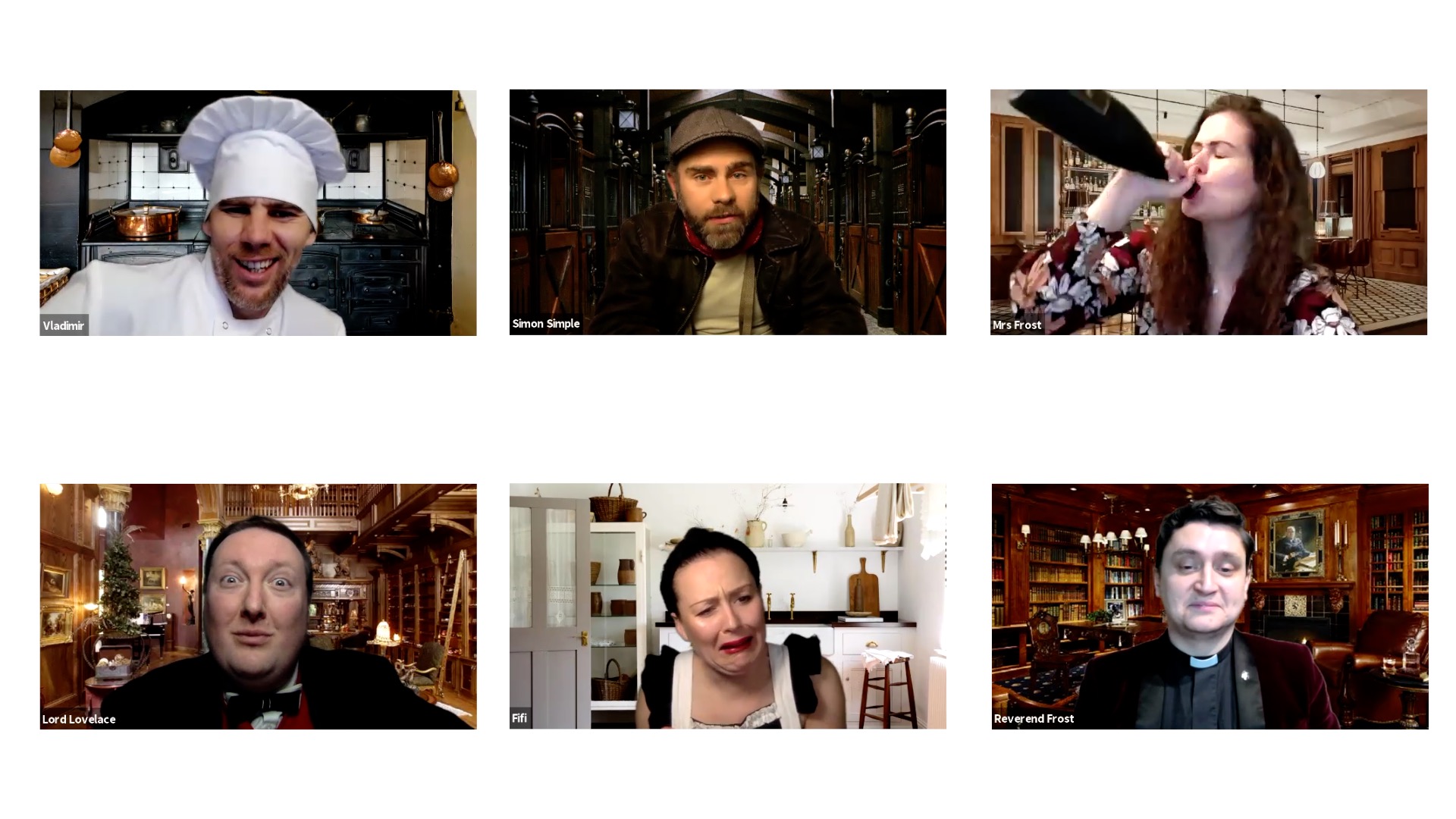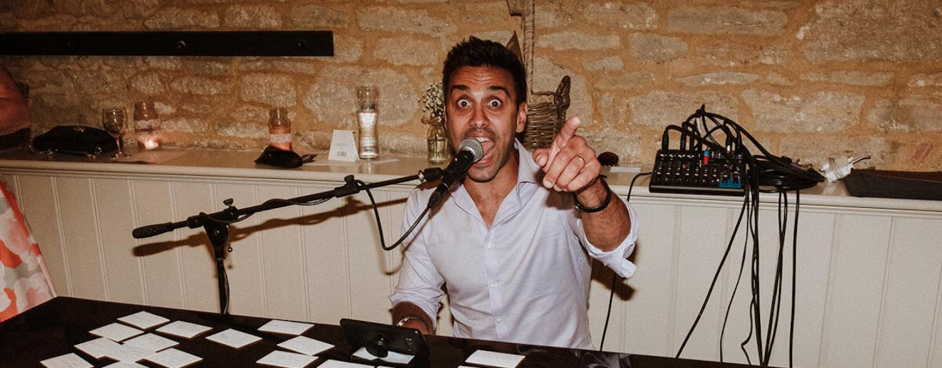
Selecting the correct virtual entertainment to match your event
A helpful way to approach virtual entertainment options is to imagine a sliding scale:
At one end, there is a conference call, where guests can interact with each other freely, but with no structure, and no element of ‘show’. At the other end, there is a highly produced show, which guests will simply watch from home, with little to no input.
The extremes of this sliding scale present problems. On the one hand, virtual events with little structure and production value can struggle to separate themselves from the kind of conference calls that guests will have been having with colleagues, friends and family since last March. On the other hand, events which are highly produced but lack interactivity are likely to leave guests wondering: ‘why couldn’t I have just watched this on TV?’
The most successful virtual events, therefore, are typically those which acknowledge the risk of falling into one of these extremes, and try to position themselves somewhere in the middle of the scale, balancing both interactivity and spectacle.

Ben – The Human Jukebox – is a great example of an act who balances spectacle with audience engagement.
The challenge of scale vs interactivity
Something a booker must take into account is that there is no ‘one size fits all’ when it comes to virtual entertainment. Rather, the same entertainment can and must be conducted differently depending on the number of guests.
Let us use the example of a very popular piece of virtual entertainment – our Live Music Quiz. This is a quiz hosted by professional musicians, in which participants must respond to musical clues played live for them.
The size of groups participating in this quiz has ranged from under ten to over two hundred. For a smaller event such as the former, the host would encourage guests to leave their microphones on, leading to a more intimate experience where guests can speak directly with each other and the host. But, as most will already know, once a conference call reaches a certain number of guests (generally around 20), allowing everyone to leave their microphone on oversaturates the audio and detracts from the experience. Thus, alternative means of guest participation and interaction must be used – such as posting in the chat or splitting guests into smaller groups using breakout rooms.
The management of idle time
As with physical events, larger virtual events will have transitional moments, the most notable being the initial period where guests are arriving, and between entertainment. For physical events, these periods are actively desirable – even crucial – it gives guests a chance to relax, pick up something to eat or drink and most importantly, to converse with each other.
This experience is not the same for virtual events, for the simple reason that it is difficult to have a private conversation in a conference call with a large number of guests. As a result, if left unmanaged, these idle times can break up the flow of a virtual event, and leave guests feeling unengaged and awkward. To avoid this, it is crucial to have entertainment planned.
Something we would recommend for any larger virtual event is for a musician or band to be playing while guests are joining the call. As well as filling time which would otherwise be empty, music is a great way to signal to guests that they are in the right place, and to ease them into the unfamiliar territory of virtual entertainment.
It is also a great idea to book a host. While your event manager is able to announce the running order in a friendly and efficient manner, booking a professional host who can fill idle time with a short set (such as a magic trick or a stand-up routine) adds a real sense of slickness to proceedings.

Nigel Mead is a fantastic host who is also one of the UK’s top magicians.
While the feeling of being at a physical event may be challenging to replicate, there are nonetheless ways to facilitate more intimate conversation between guests at larger virtual events. Our recommendation would be to split guests into several sets of small, randomised breakout rooms at various points throughout the virtual event, and rotate these periodically. Feedback for this system has been overwhelmingly positive, noting that the virtual platform can be a catalyst for conversations between colleagues who may otherwise never have spoken.
Conclusion
For virtual entertainment to be a success, it is important to consider how it fits in its parent event. For smaller events, it is important that the entertainment is polished enough to elevate proceedings above a typical conference call. For more elaborate events, care must be taken to maintain audience engagement through interactivity and personalisation. Crucially, one must acknowledge that virtual events have different strengths and weaknesses to their physical version, and plan accordingly.